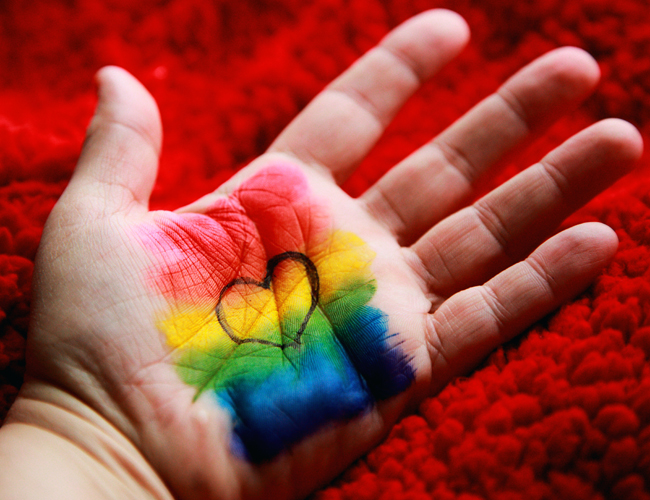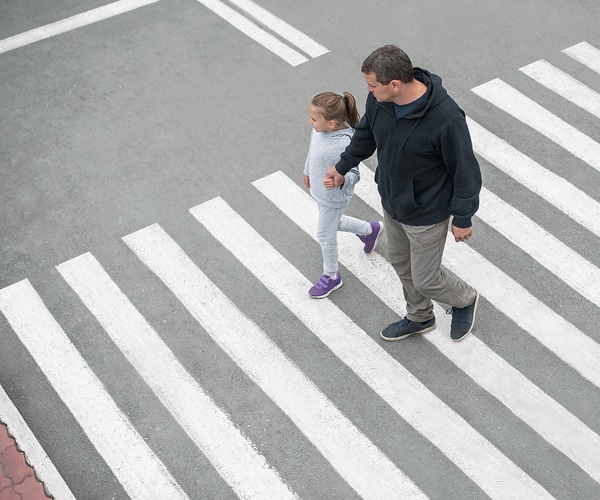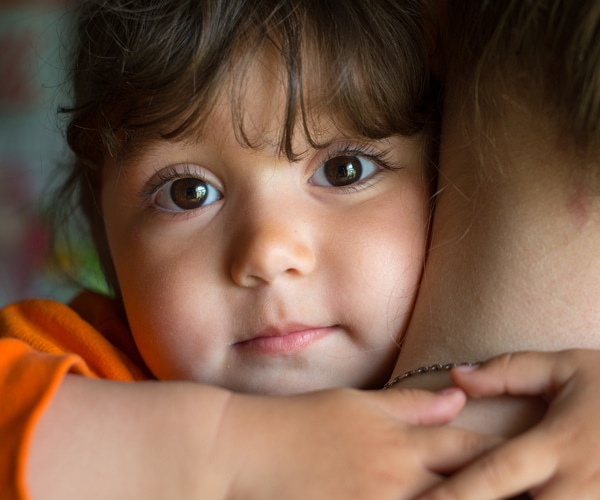Did You Know?

Racism affects both physical and mental health
July 10, 2023As a determinant of health, racism has a profound impact on child well-being. Its many negative effects for racialized young people include:
- restricted access to resources, such as housing, education and employment;
- increased exposure to negative experiences, such as racist incidents and unnecessary contact with the criminal justice system;
- increased engagement in unhealthy behaviours to cope with the stresses of racism, such as substance use; and
- increased rates of physical injury as a result of violence.
To investigate the effects of racism on social and emotional well-being, researchers combined findings from more than 120 observational studies involving young people from
birth through age 18. Most of these studies were conducted in the United States, although
Canada and many other countries were also represented. Drawing on the experiences of
Black, Latinx, Asian and Indigenous children, the meta-analysis found many significant
links between racial discrimination and poorer well-being. Mental health concerns were
the most frequent, including depression, anxiety and conduct problems, as well as self-esteem and self-worth concerns.
Racism also has detrimental effects on children’s physical health. A study that included more than 95,000 American children aged 18 and younger found that those who experienced racial discrimination had a significantly lower likelihood of reporting that they were in excellent health, compared with those who did not have such experiences. As well, children exposed to racial discrimination were more likely to experience common childhood illnesses. The physical impact of racism also starts early, with low birth weights and preterm births being linked to maternal experiences of racial discrimination.
For more information, see Vol. 15, No. 3 of the Children’s Mental Health Research Quarterly.

Racism causes substantial damage
July 3, 2023Race is a social construct used to classify individuals who share common features, such as skin colour. Because the concept does not reflect biology, parameters for classifying individuals or groups have changed over time, as have the words used to describe so-called races. Racism, in turn, occurs when people’s worth is assigned based on their identified race in ways that unfairly disadvantage some groups while simultaneously advantaging others.
Racism results in avoidable and unfair disparities in power, resources and opportunities — for individuals and groups and within institutions and social systems. And, both children and adults feel the impact of racism. Adults, however, hold the responsibility for working to eradicate racism and the damages it causes.
For more information, see Vol. 15, No. 3 of the Children’s Mental Health Research Quarterly.

National Indigenous Peoples Day takes place June 21
June 19, 2023June 21 marks National Indigenous Peoples Day in Canada — a day to recognize and celebrate the heritage and cultures of First Nations, Inuit and Métis Indigenous peoples. In cooperation with Indigenous organizations, the Government of Canada chose June 21, the summer solstice, for National Indigenous Peoples Day. For generations, many Indigenous peoples and communities have celebrated their culture and heritage on or near this day due to the significance of the summer solstice as the longest day of the year. While Indigenous children have experienced, and still experience, the negative legacy of colonialism, many of them remain resilient. A survey of nearly 5,000 First Nations youth in Canada found that more than half reported having very good or excellent mental health. For more information, see Vol. 12, No. 2, page 5 of the Children’s Mental Health Research Quarterly.

June is Pride Month
June 12, 2023Pride month, for the LGBTQ+ community and their families and friends, began with Pride marches in the 1970s in major cities across North America.
The event was sparked by 1969 police raids of the Stonewall Inn, a gay bar in Greenwich Village, New York. This raid, followed by riots, formed a watershed moment in the modern LGBTQ+ rights movement and became the impetus for organizing pride marches on a much larger public scale.
In the US, President Bill Clinton declared June “Gay & Lesbian Pride Month” in 1999, and Pride Week started to be celebrated in Canada in 1973. Here, it became a national LGBT rights event in several Canadian cities, including Vancouver, Toronto, Ottawa, Montreal, Saskatoon and Winnipeg.
Although Vancouver will hold its annual Pride parade on Aug. 6 this year, June is considered the International Pride Month. To learn more about supporting LGBTQ+ youth, Vol. 11 No. 2 of the Children’s Health Policy Centre Research Quarterly, provides a primer.

Take action for anxiety
June 5, 2023June 10 is World Anxiety Day, also known as Action Anxiety Day. Because anxiety is the most common health disorder facing children, the Canadian Mental Health Association encourages everyone to ACT on this day.
ACT stands for Awareness, Colours and Treatment. To raise awareness, telling stories of anxiety and posting support to social media, can help reduce the stigma and make others more aware of the need for action. Wearing colours of blue and orange on anxiety day will help signal to others that you care about people who are facing anxiety. And insisting on treatment can help challenge governments to make treating anxiety a priority.
The Canadian Mental Health Association offers a toolkit for the day, and you can learn more about anxiety in two issues of the Children’s Mental Health Research Quarterly, vol. 10 no. 2 and vol. 10 no. 3.

How practitioners and policy-makers can support children with PTSD
May 22, 2023The results of a systematic review by the Children’s Health Policy Centre suggest five implications for practice and policy relating to posttraumatic stress disorder (PTSD):
- Use cognitive behavioural therapy when treating childhood PTSD. Our review showed that CBT was effective for children who had experienced a variety of traumas, including multiple and complex traumas. As well, many children in these studies were experiencing concurrent mental health concerns, and this treatment was still effective for their PTSD.
- Consider Eye Movement Desensitization and Reprocessing (EMDR) as a reasonable second choice. Although there is more evidence supporting CBT to treat childhood PTSD, EMDR showed promise for children exposed to a single trauma, based on one trial. That said, EMDR needs further rigorous evaluation.
- Do not rely on medications to treat childhood PTSD. Based on this review, there are no medications that are effective in treating childhood PTSD. Instead, effective psychosocial treatments should be the mainstay.
- Treat concurrent conditions using effective interventions. Some children with PTSD will have concurrent mental disorders. These children should be provided with effective treatments addressing all of their mental health concerns. (Information about effective treatments for 12 of the most common disorders is available from one of our reports.) https://childhealthpolicy.ca/preventing-and-treating-childhood-mental-disorders/
- Be prepared for more children to present with PTSD during COVID-19. Recent estimates suggest that PTSD may greatly increase due to the pandemic as many children may experience the trauma of losing loved ones or witnessing loved ones being seriously affected. CBT should still be used when trauma stems from COVID-19.
No child should be exposed to the kinds of serious adverse experiences that can give rise to PTSD. Prevention of such experiences therefore remains the top priority. But when prevention has not been possible, CBT can help. For more information, see Vol. 15, No. 2 of the Children’s Mental Health Research Quarterly.
Moving eyes and thoughts may help kids move on from trauma
May 15, 2023In a head-to-head trial, both Eye Movement Desensitization and Reprocessing (EMDR) and Cognitive Behavioural Therapy (CBT) led to improvements on posttraumatic stress disorder (PTSD) diagnostic measures by three-month follow-up.
Specifically, 86–95.0% of children who had been treated with EMDR were diagnosis free after three months, compared with 87 to 89% of children who had been treated with CBT (figures varied by informant, whether self- or parent-report), with no significant differences between the two treatments.
At one-year follow-up, even more children were diagnosis free. By self-report, 100% of EMDR children and 92% of CBT children were diagnosis free after one year, with no significant difference between the two groups.
But by parent report, there was a statistically significant difference favouring EMDR, with 100% of children who received this treatment being diagnosis free, compared to 88% of those who received CBT.
Beyond diagnoses, both EMDR and CBT also reduced PTSD symptoms at three-month and one-year follow-ups, with no significant difference between the two treatments. In sum, both treatments were effective, with EMDR showing only one statistically significant benefit over CBT — greater reductions in PTSD diagnostic rates by parent report at one-year follow-up. Table 4 summarizes these outcomes. For more information, see Vol. 15, No. 2 of the Children’s Mental Health Research Quarterly.

How to treat PTSD?
May 8, 2023Once a child has been diagnosed with PTSD, and their safety has been assured, they need immediate access to effective treatments. The Children’s Health Policy Centre has conducted a systematic review on what such treatments entail.
Among the successful interventions was Prolonged Exposure, a program based on cognitive-behavioural therapy (CBT). It led to statistically significant improvements for all PTSD-related outcomes. In particular, 63% of Prolonged Exposure youth were diagnosis free at six-month follow-up, compared to 26.% of controls. Prolonged Exposure youth also reported significantly fewer PTSD symptoms, differences that were both statistically significant and clinically meaningful. However, group differences were no longer significant for the one PTSD symptom measure used at 17-month follow-up.
In a second Prolonged Exposure study, the intervention led to significant improvements on most PTSD- related outcome measures. In particular, 89 % of Prolonged Exposure youth were diagnosis free at one- year follow-up, compared to 54 % of controls. Prolonged Exposure youth also had significantly milder PTSD symptoms than controls by both self-report and examiner ratings, with a large effect size for the latter. But there was no significant difference on a measure that combined the number and severity of self-reported PTSD symptoms. Finally, overall functioning improved significantly more for Prolonged Exposure youth.
A treatment called KIDNET, which also based on CBT, similarly led to several benefits at four-month follow-up. Intervention children had significantly fewer intrusive thoughts and avoidance symptoms. KIDNET also significantly reduced the severity of PTSD symptoms — by 60%. As well, 84% of intervention children no longer met diagnostic criteria for PTSD, compared with 30% of controls. KIDNET also led to better overall functioning. Hyperarousal was the only PTSD symptom that this intervention did not significantly improve.
The sole medication trial found no difference in posttraumatic stress symptoms for children on D-cycloserine compared with controls at three-month follow-up. Importantly, both intervention and control children received CBT — and all had significantly lower posttraumatic stress symptom scores at follow-up. In fact, scores were reduced by approximately 50% between baseline and follow-up, suggesting benefits from CBT.
For more information, see Vol. 15, No. 2 of the Children’s Mental Health Research Quarterly.

You can celebrate Child & Youth mental health day
May 1, 2023The key message or theme for Canada’s Child & Youth Mental Health Day, May 7, is “I care about you.”
Founded by FamilySmart in 2007, the special day aims to build caring connections between young people and the adults in their lives. It is intended to create awareness and acknowledgement of the thousands of children, youth, and families needing mental health support and care across Canada.
In honour of the day, in 2019, the Children’s Health Policy Centre released its 50th issue of the Quarterly publication about children’s mental health research. This celebratory edition — focusing on good news to safeguard children’s health — is titled Celebrating children’s mental health: 50 lessons learned.

Identifying PTSD risk can encourage resilience
April 17, 2023Many children show great resilience in the face of adversity. In particular, approximately 75–90% of children exposed to trauma do not develop PTSD. Factors that protect children from developing this disorder include strong family and peer supports. Besides recognizing protective factors, it is also important to consider risk factors for developing PTSD after trauma.
To determine risk factors, researchers systematically identified and analyzed 40 long-term studies on posttraumatic stress reactions in children. Predictors for developing posttraumatic stress reactions included injury severity and days in hospital, as well as the stress symptoms occurring soon after the trauma.
Having a parent with posttraumatic stress symptoms also increased risk, as did the child having symptoms of depression or anxiety. In contrast, child age, ethnicity and socio-economic status were unrelated to risk.
The research as to what increases risks for posttraumatic stress also suggests ways to help, for example, by strengthening family supports. But the foremost goal should be to prevent avoidable childhood adversities wherever possible.
When trauma cannot be prevented, ensuring the child’s basic safety is the first step. And if PTSD symptoms have developed, effective treatments are urgently required. For more information, see Vol. 15, No. 2 of the Children’s Mental Health Research Quarterly.
